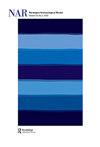谁害怕脏话?离经叛道者的葬礼和活人祭祀
IF 1.1
3区 历史学
0 ARCHAEOLOGY
引用次数: 1
摘要
在过去的几十年里,对仪式化暴力研究感兴趣的考古学家继续在许多考古记录中争论人类牺牲的可能性、程度和可能的证据。毫无疑问,世界许多地区和许多时期都有充分的证据表明存在这种活动。然而,对于北欧史前考古学来说,这场争论仍然令人惊讶地悬而未决。在许多方面,这一领域仍然存在着根深蒂固的分歧:一些人看到了整个记录中人类牺牲的广泛证据,而另一些人则看到了空间和时间上的口袋,在这些口袋里,一组可怕的证据抬头,提出的问题比他们回答的问题多;还有一些人认为,确凿的证据很少或根本不存在。作为这场辩论的一部分,“异常”埋葬一词已成为一些学者的流行语,用于指代因其文化和时间背景而不符合规范解释框架的坟墓和埋葬。一些这样的葬礼可能提供了牺牲的证据,而另一些则反映了各种可能的死亡原因,如疾病、战争,甚至自然灾害和事故。在这种情况下,“离经叛道”一词不仅是规范性的,而且令人困惑地矛盾。它用于描述那些在其他方面“非典型”的坟墓(或其他考古组合/特征),无论是在展示仪式化暴力的证据还是明显虐待死者的证据(无论是暗示性的还是明确的)。但“离经叛道”也被正确地用于描述非规范的埋葬环境,而不是必然的暴力或错误的目的。使用这个词也指“离经叛道”的个人本身,这加剧了人们的困惑,他们在证词中的死亡和虐待可能被解释为司法杀害,例如对邪恶行为或活动的惩罚。应当作出明确的区分。但是,我们在这里认为,区分一些越轨者的处决和牺牲可能实际上没有必要。这是因为执行行为本身可能本文章由计算机程序翻译,如有差异,请以英文原文为准。
Who’s Afraid of the S-word? Deviants’ Burials and Human Sacrifice
Over the last couple of decades, archaeologists interested in studies of ritualized violence have continued to debate the possibility, extent, and possible evidence for human sacrifice in much of the archaeological record. There is no doubt ample evidence for such activities from many parts of the world and from many time periods. However, for the archaeology of Northern European prehistory, this debate remains surprisingly unresolved. In many ways the field remains divided along deeply-held lines: some see widespread evidence for human sacrifice across the record, whilst others see spatial and temporal pockets where macabre sets of evidence rear their head and beg more questions than they answer; still others argue that solid evidence is scant or nonexistent. As part of this debate, the term ‘deviant’ burial has become a catchword for some scholars, used to designate graves and burials which do not fit a normative explanatory framework given their cultural and temporal contexts. Some such burials may provide evidence for sacrifice while others reflect various likely causes of death, such as illness, warfare, or even natural disasters and accidents. The term ‘deviant’ in this context is not only normative but confusingly ambivalent. It is used to describe those graves (or other archaeological assemblages/features) which are otherwise ‘atypical’ whether in their exhibition of evidence for ritualized violence or evidence (whether suggestive or clear) for the apparent mistreatment of the dead. But ‘deviant’ is also used, rightly, in descriptions of non-normative burial contexts outside of necessarily violent or errant ends. Confusion is compounded by the use of the term in also referring to ‘deviant’ individuals themselves, whose deaths and maltreatment upon deposition may be interpreted as judicial killings, e.g. as punishment for miscreant behaviours or activities. A distinction should clearly be made. But, we submit here that distinguishing between some deviants’ executions and sacrificial killings may not actually be necessary. This is because the act of execution itself may have
求助全文
通过发布文献求助,成功后即可免费获取论文全文。
去求助
来源期刊

Norwegian Archaeological Review
ARCHAEOLOGY-
CiteScore
2.10
自引率
0.00%
发文量
13
期刊介绍:
Norwegian Archaeological Review published since 1968, aims to be an interface between archaeological research in the Nordic countries and global archaeological trends, a meeting ground for current discussion of theoretical and methodical problems on an international scientific level. The main focus is on the European area, but discussions based upon results from other parts of the world are also welcomed. The comments of specialists, along with the author"s reply, are given as an addendum to selected articles. The Journal is also receptive to uninvited opinions and comments on a wider scope of archaeological themes, e.g. articles in Norwegian Archaeological Review or other journals, monographies, conferences.
 求助内容:
求助内容: 应助结果提醒方式:
应助结果提醒方式:


